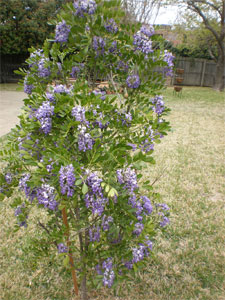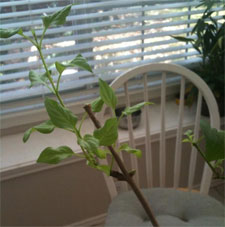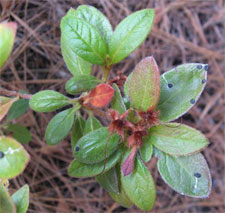Question and Answer – January 2010
Remember that Neil requires a photo with any question addressed in this column. (Of course, he’s available seven hours each weekend on KRLD and the Texas State Network for questions that do not have photographs.)

Question: I am assuming the hard pods on my Texas mountain laurel contain seeds. If that is correct, is it possible to plant them, and when and how should it be done? S.L., Dallas
Answer: Mountain laurels are traditionally grown from seed, and since they’re legumes, the seeds are indeed produced within those brown pods. The seeds will eventually fall to the ground after the pods split open, but you can remove them now. They’re not quite marble-sized, and they’re a beautiful orange-red in color. However, the noteworthy thing about the seeds is their incredibly hard seed coat. That’s nature’s way of protecting the species, so that all of the seeds don’t germinate quickly following one heavy rain. The hard seed coats take years to break down, ensuring the ultimate "timed-release" of ingredients into nature (the new plants). Speed that process along by holding each seed gently with a pair of pliers, then scoring it with a three-cornered file or unmounted hacksaw blade until you can just see the internal white tissue of the embryonic plant inside. Soak these "scarified" seeds in water overnight, then plant them 1 inch deep in 1-gallon pots filled with a well-draining potting soil. Put the pots in full sun, and keep the soil moist, but not wet. The young plants will grow deliberately, probably as much as 10-15 inches in their first year. North of Houston-San Antonio, you’ll need to protect the potted seedlings during winter’s cold. Were they mine, I’d grow them a second year in 2-gallon pots, then protect them from extreme cold for the second winter and set them out in early spring.

Question: A friend gave me a cutting from her plant, which is rooted and doing well in a plastic bag. How can I save it for spring planting? I have a semi-covered deck, if that helps. No name given, The Colony.
Answer: You labeled your photograph as "lavender," but this isn’t the plant that goes by that name. It actually looks like a lilac. Whatever it is, it will need to be potted into a 1- or 2-gallon pot filled with good potting soil in order to survive the winter. Keep it in a cool, bright spot, then put it outside in the spring. (You didn’t ask, but I’m compelled to warn people that lilacs don’t perform in Texas like they do in the North. The plants are lethargic in our heat, and their flower heads in spring and fall are 10 percent the size they would be in the cold parts of the country. This warning always precipitates angry outcries from lilac lovers. I’m going to ask that you save that effort. I try to be open-minded, but not on this topic.)
Question: I have a hedge of Viburnum tinus ‘Spring Bouquet.’ It was planted 8 years ago, and it’s done fairly well. However, I’ve lost two plants, and a third one, shown in the photo, is dying. Do you have thoughts on what might be causing it? S.McC., no city given.

Answer: There is no clear-cut answer to this kind of die-off of viburnums. They don’t operate like some other plants that see die-out spreading from one plant right down a row. Check the irrigation, to be sure that the end plants are getting enough water. Check the root systems of the affected plant, to look for any evidence of nematodes. You might send samples to the Plant Disease Diagnostic Lab at Texas A&M. Your local Texas Agrilife Extension office will have the instructions. My bet would be that it’s something cultural, such as dry soil, exposure to herbicides, a gas leak, or something akin. I know of no disease that travels this way on that plant. Good luck!

Question: What would cause my azalea plant to be thinning and dying? See attached photo. R.I., Chandler.
Answer: This appears, from the photo, to be some type of fungal leaf spot. Were the plants mine, I’d wait it out until spring, then apply a fungicide to protect the new growth. Blow the fallen leaves out from beneath the plants to prevent further infection. You could also send a sample to the same laboratory mentioned in the previous answer.
